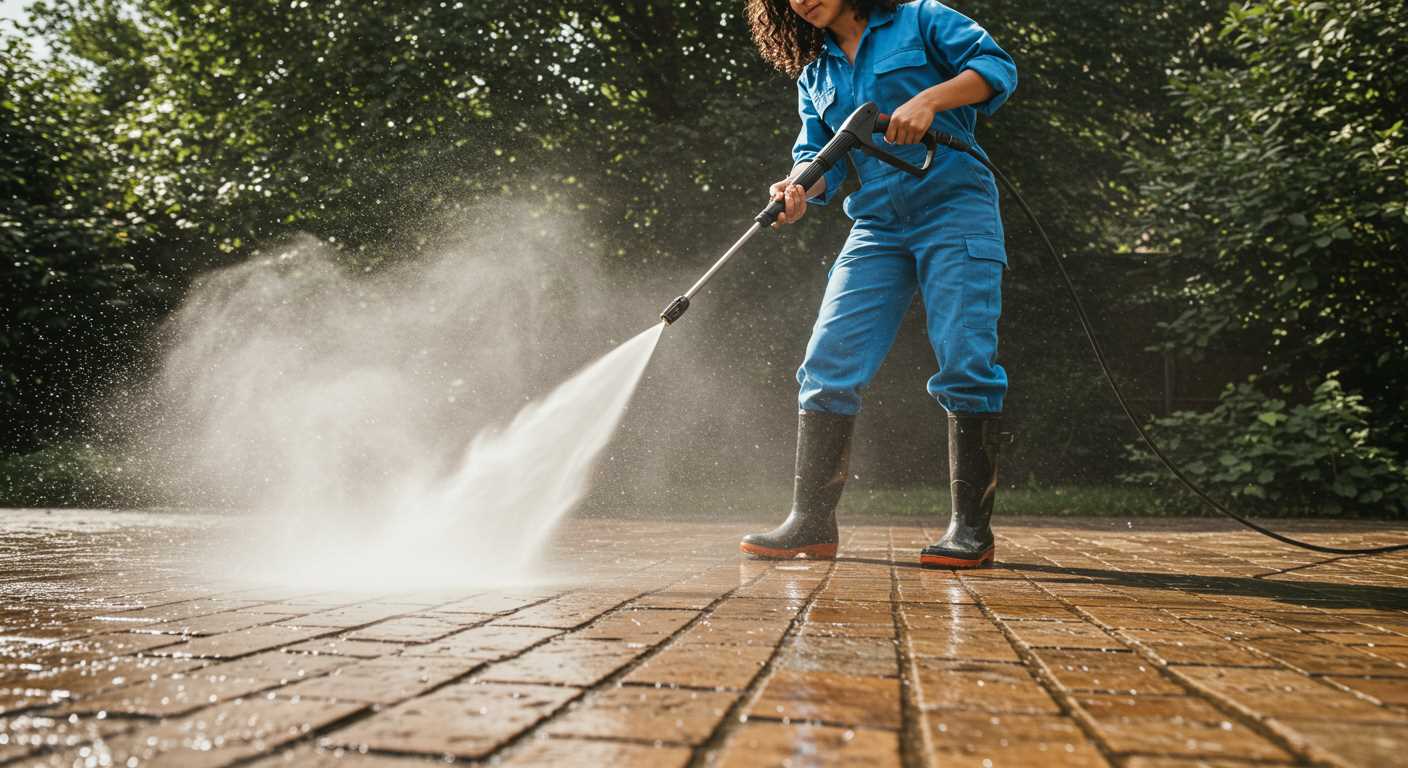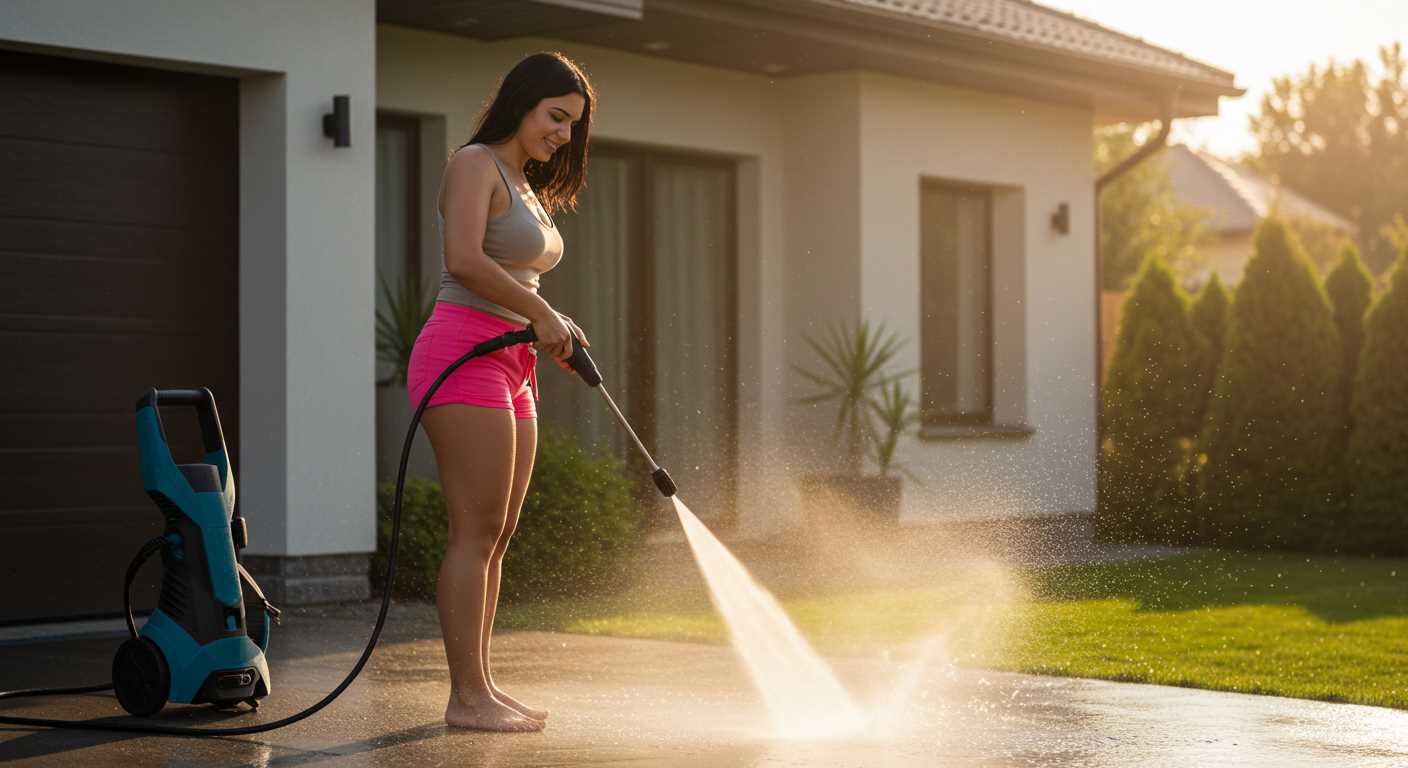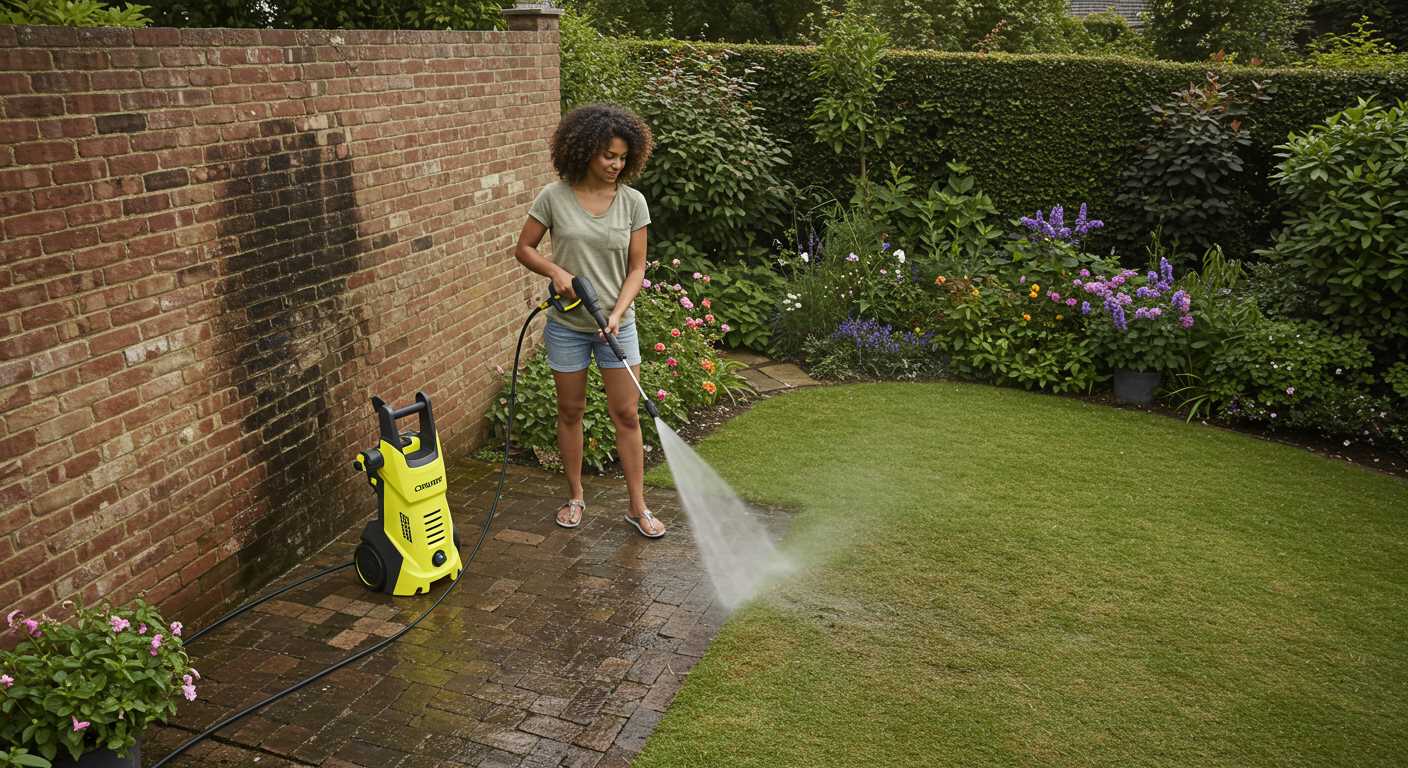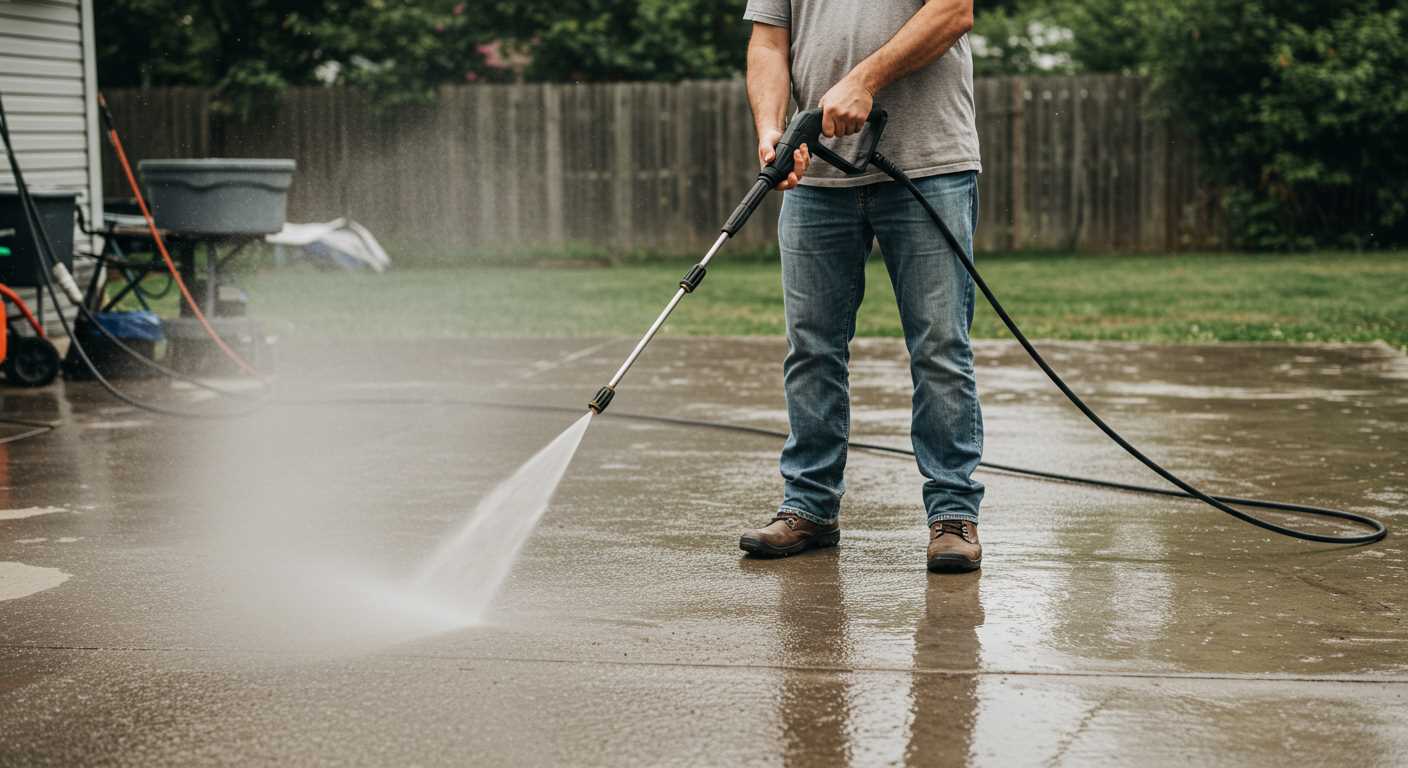



If you’re considering using a high-powered cleaning tool to address grime on plastic items, the decision can yield impressive results if done correctly. It’s essential to adjust the nozzle and maintain a safe distance from the surface. A wide spray pattern helps to avoid any damage while ensuring a thorough removal of dirt and debris.
Choosing the right setting is paramount. A fan spray allows for a gentle but effective approach, ensuring that the integrity of the plastic remains intact. I recommend using the lowest pressure setting initially to gauge how the surface reacts. Certain plastics can be more susceptible to damage than others, so testing a small, inconspicuous area is a wise strategy.
In addition, avoid using heat attachments, as excessive temperature can lead to warping. The detergent you apply should also be suitable for plastic; check the label for compatibility. Allowing the soap to sit for a few minutes before rinsing off can enhance the cleaning process significantly.
Taking these detailed precautions not only improves your experience but also extends the lifespan of your items. With mindful execution, this method becomes a valuable part of your cleaning arsenal.
Evaluation of Using High-Pressure Equipment on Plastic Materials
Using high-pressure cleaning apparatus on plastic surfaces can produce satisfactory results, provided that specific guidelines are adhered to. The nozzle size, pressure setting, and distance play crucial roles in preventing damage while achieving effective results.
Optimal Pressure Settings

For most plastics, a pressure setting between 1200 to 2000 PSI is adequate. Exceeding this threshold can lead to cracking or surface degradation. Always adjust according to the type and condition of the plastic being addressed.
Recommended Nozzle Types
Utilising the correct nozzle is vital. A wide-angle spray, such as a 25 or 40-degree nozzle, disperses the water more gently, reducing the risk of harm. A narrow jet focuses too much pressure and may cause unintended damage.
| Plastic Type | Recommended PSI | Nozzle Type |
|---|---|---|
| Polyethylene | 1200 – 1500 | 25-degree |
| Polypropylene | 1500 – 2000 | 40-degree |
| Acrylic | 1000 – 1500 | 25-degree |
| Vinyl | 1200 – 1800 | 40-degree |
Maintaining a distance of at least 2 feet from the surface ensures thorough cleansing without causing abrasion. For stubborn stains, applying a biodegradable detergent prior to rinsing may enhance outcomes without risk to the material. Testing a small, inconspicuous area first is always advisable to avoid any potential damage.
Understanding Pressure Washer Settings for Plastic

To protect plastic surfaces during the cleaning process, the choice of settings on a washing unit is paramount. I recommend using a lower pressure setting, typically around 1200 to 1700 PSI, to avoid damaging the material. Here are key settings to consider:
- NOZZLE TYPE: Select a wide fan nozzle, such as 25 or 40 degrees, to distribute the water pressure evenly. This helps prevent focused force that can cause dents or scratches.
- ANGLE: Maintain a distance of at least 2 to 3 feet from the surface. This ensures the water impact is softened, reducing the risk of harm.
- WATER TEMPERATURE: Using lukewarm water can enhance the effectiveness of any detergents while being gentle on the plastic.
Before applying high-velocity jets, testing a small, inconspicuous area is advisable. This allows for assessing how the surface reacts under pressure without risking extensive damage. Note that certain types of plastics, like PVC, can handle slightly higher PSI, while softer plastics require extra caution.
Lastly, utilising appropriate detergents specifically designed for plastics can help break down grime, making the process smoother without relying solely on pressure. A synergistic approach ensures longer-lasting results and protects the integrity of the material.
Identifying Types of Plastic Safe for Pressure Washing
First, I recommend checking the type of plastic before using a high-pressure device. Common plastics such as Polypropylene (PP) and Polyethylene (PE) are generally resistant and can tolerate strong water streams without damage. These materials are often found in outdoor furniture, storage bins, and playground equipment.
Avoid using intense streams on PVC (Polyvinyl Chloride) and ABS (Acrylonitrile Butadiene Styrene). These plastics, while durable, may warp or crack if exposed to excessive force. Items like garden hoses or some types of piping often fall into this category.
Polycarbonate is another plastic to be cautious with. It possesses good strength but can scratch and become cloudy if the pressure is too high. Use a lower setting if this material is present.
For composite plastics or those mixed with wood fibres (like some decking materials), assessment is crucial. Always refer to the manufacturer’s guidelines before proceeding. If in doubt, start with a mild setting to gauge the response.
Lastly, testing on a small, inconspicuous area can provide insights into how the plastic reacts to the force applied. Always prioritise a gentle approach to preserve the integrity of the items being treated.
Choosing the Right Nozzle for Plastic Surfaces

To achieve outstanding results while working with plastic materials, selecting the appropriate nozzle is paramount. Each nozzle type affects the water jet’s intensity and angle, critical factors in detaching dirt and grime without causing damage.
Types of Nozzles
- Zero-Degree Nozzle: Delivers a concentrated stream for tough stains, but should be used cautiously to avoid damaging softer plastics.
- 15-Degree Nozzle: A good balance for moderate mould and filth on hard plastics. This nozzle offers a wider spray but retains enough pressure for efficient removal.
- 25-Degree Nozzle: Suitable for broader coverage, making it effective for larger areas. Ideal for less stubborn dirt.
- 40-Degree Nozzle: Gentle spray pattern, great for delicate surfaces. Use this when working on softer plastics or sensitive finishes.
Tips for Nozzle Selection
- Assess the plastic’s durability before selecting a nozzle. Softer materials necessitate gentler options.
- Start testing with a broader-angle nozzle. Gradually move to a narrower angle if necessary for more stubborn spots.
- Always maintain a safe distance from the surface to prevent surface damage, particularly with more intense nozzles.
- Experiment with different nozzle types on inconspicuous areas to gauge their impact before proceeding to visible sections.
Utilising the correct nozzle type not only safeguards the integrity of your plastics but enhances the overall efficacy of your cleaning efforts. Proper nozzle selection can turn a challenging task into a quick and satisfying experience.
Optimal Distance and Angle for Pressure Washing Plastic
Maintain a distance of 12 to 24 inches between the nozzle and the surface of the plastic. This spacing helps prevent damage and ensures effective dirt removal without causing stress to the material.
The water stream should be directed at an angle of 30 to 45 degrees. This approach allows the force of the water to lift grime without impacting the plastic’s structure negatively.
For larger areas, gradually increase the distance but remain observant of the results. Always start at a higher distance and decrease if more power is needed. Monitor the surface for any changes–if you notice any flexing, increase the distance immediately.
Remember that, sunlight can affect the plastic. Ensure you wash in a shaded area or wait until the plastic cools down. This helps in avoiding warping and ensures the cleaning solution works effectively.
Testing a small area first is advisable to gauge the compatibility of the plastic and the water pressure before proceeding with larger sections.
Recommended Cleaning Solutions for Plastic When Pressure Washing

For maintaining the integrity of plastic surfaces, specific agents work best during the washing process. Here is a concise list of solutions that I have personally vetted and recommend:
- Dish Soap: A diluted mixture using mild dish soap helps in cutting through grease without damaging plastic.
- Vinegar: Mixing equal parts of white vinegar and water serves as an effective natural cleaner, especially for stubborn stains.
- Baking Soda: A paste made of baking soda and water can tackle tough spots and odours without scratching.
- Commercial Plastic Cleaners: Look for biodegradable products specifically formulated for use on plastic. Follow the manufacturer’s guidelines for application.
Always rinse thoroughly after applying any cleaning solution. This ensures no residue remains, which can attract dirt or lead to discolouration over time.
Application Tips

- Test any cleaner on a small, inconspicuous area before applying it to the entire surface.
- Apply solutions using a soft brush or cloth to avoid scratching.
- Ensure surfaces are prepped by removing loose debris before applying your chosen cleaning agent.
Using the right cleaning solutions enhances the effectiveness of your washing approach while preserving the quality of plastic materials.
Avoiding Damage: Common Mistakes When Cleaning Plastic
One key mistake is utilising an incorrect setting on your device. Opt for a lower pressure to prevent structural compromise. Many users overlook the importance of adjusting settings based on the plastic type and condition.
Another frequent error involves choosing the wrong attachment. Using a turbo nozzle instead of a fan nozzle can lead to surface abrasion. It’s crucial to select an appropriate attachment that minimizes potential harm while maintaining cleaning efficiency.
Maintaining an improper distance during the task can also cause issues. Standing too close exacerbates the risk of chipping or warping. Aim for a distance of approximately two feet for most surfaces to ensure a safe cleaning process.
Many neglect pre-inspection. Inspecting the surface for cracks or weak areas before starting can save significant damage. Knowing the material’s integrity is essential; don’t assume durability without verification.
Inadequate rinsing post-application is a common oversight. Residue from cleaning agents may cause long-term surface damage, so thorough rinsing is necessary to preserve the integrity of the material.
Using harsh solutions can also lead to discolouration or degradation. Always test a small area first and avoid any products that may contain bleach or other aggressive chemicals. Sticking to mild, plastic-safe alternatives is advisable.
Finally, timing is everything. Allow surfaces to dry completely before applying any protective coatings or sealants for the best results. Ensuring the surface is fully dry helps prevent trapping moisture that could lead to deterioration.
Post-Cleaning Care for Plastic Surfaces
After tidying up plastic items, it’s important to apply a protective treatment to maintain their appearance and durability. Applying a specialised plastic protectant can help resist UV rays, reducing the chances of discolouration and fading over time.
Inspect all surfaces for any remaining residues or stains, and address those promptly to prevent them from setting in. If necessary, use a soft cloth to wipe down the surface with water and a mild detergent after initial treatment.
For outdoor plastic furniture, consider storing items in a shaded area during extreme weather conditions. This simple step extends the lifespan of the plastic and keeps it looking new.
Regular maintenance is crucial. A quick wash every few months will help prevent build-up of dirt and grime, making it easier to address any future cleaning needs.
Additionally, avoid abrasive cleaners or sponges that can scratch the surface. Opt for soft brushes or microfiber cloths for better results, preserving the integrity of the plastic material.
Applying a wax-based polish can enhance shine while providing an extra layer of protection. Be sure to follow the manufacturer’s guidelines for application to ensure compatibility with the specific type of plastic.
Keep away from harsh chemicals that could compromise the surface. Always refer to the product specifications and recommendations provided by the manufacturer of your plastic items for optimal care.
When to Consider Alternative Cleaning Methods for Plastic

Switching from high-pressure tools to gentler methods becomes necessary when dealing with delicate plastic items or specific types of staining. For everyday grime on durable plastic surfaces, gentler techniques can often yield satisfactory results without risk of damage.
For items that are prone to scratching or warping, such as plastic furniture or outdoor decor, consider using a soft-bristle brush combined with mild soap and water. This method effectively removes dirt while preserving the integrity of the material. If the stains are persistent, a vinegar solution can be used as a pre-treatment before brushing.
In instances of heavy dirt, grease, or the presence of mildew, steam cleaning is an effective alternative. It applies heat without the high force that can be harmful to certain plastics. The high temperature helps to break down tough stains, allowing for easier removal with a cloth or soft brush.
When facing particularly delicate or intricate designs, more methodical cleaning approaches may be warranted. For ornamental plastic pieces, hand-washing with a gentle detergent and a soft cloth provides thorough cleaning while safeguarding the item’s finish.
It may also be beneficial to evaluate environmental conditions. In areas with hard water, mineral deposits can accumulate on plastic surfaces. In such cases, using descaling agents or simple household solutions like lemon juice combined with baking soda can help. These substances gently tackle the buildup without the risk associated with high-impact washing.
As a rule of thumb, whenever you’re contemplating a cleaning method, evaluate the specific plastic type, its condition, and any noted manufacturer recommendations. This awareness guides appropriate cleaning choices, ensuring longevity and performance of the plastic items.
| Type of Plastic | Recommended Cleaning Method |
|---|---|
| Polyethylene | Soft-bristle brush with soap, vinegar for tough stains |
| Polypropylene | Hand wash with gentle detergent |
| Acrylic | Soft cloth with mild cleaner, avoid abrasives |
| PVC | Steam cleaning or non-abrasive descaling solution |








